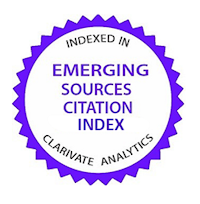Significant Mexican Health Sciences research 1999-2004. A bibliometric analysis
Abstract
The economic conditions in Mexico have contributed to the impoverishment of its population and, consequently a worsening of their health. Therefore, if research contributes to development, the study of significant research is justified, that is to say research whose results appear in core journals, a principle commonly known as the Bradford Law. The purpose of this study is to determine what has been the scientific growth in order to be able to assume, with empirical evidence, that Mexican researchers have overcome difficulties in order to publish in the most relevant journals, i.e. the most significant ones. Empirical data was built on the basis of the journal lists compiled by Garfield, which comprise of 200 journals that reached the highest levels of impact over a period of 15 years. A total of 155 health science journals were included in the analysis conducted through the Web of Science. A total of 1,293 records published between 1999 and 2004 were identified from a total of 829,400 papers that appeared in those journals and in within the same period globally. 80 % of the significant research carried out in Mexico was concentrated in two entities of the country. It was found that health research is the responsibility of public institutions, mainly academia. Also, that the most active disciplines were biochemistry and molecular biology, neurosciences, general and internal medicine, immunology and microbiology. The conclusion reached is that Mexican researchers have overcome the difficulties related with publishing papers in the core journals. However, Mexican institutions still have to strengthen themselves further in order for the research they carry out be reflected in papers that will take them into a market of visible science, that countsDownloads
Metrics
Las obras que se publican en esta revista están sujetas a los siguientes términos:
1. El Servicio de Publicaciones de la Universidad de Murcia (Editum) conserva los derechos patrimoniales ('copyright') de las obras publicadas, y favorece y permite la reutilización de las mismas bajo la licencia de uso.
2. Las obras se publican en la edición electrónica de la revista bajo la licencia Creative Commons Atribución Internacional CC BY 4.0. Se puede copiar y redistribuir el material en cualquier medio o formato y remezclar, transformar y crear a partir del material para cualquier finalidad, incluso comercial.








